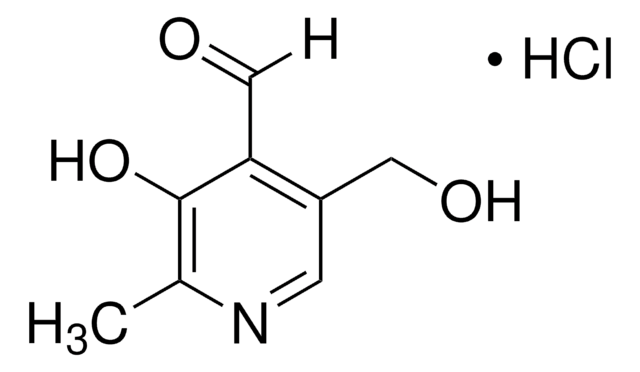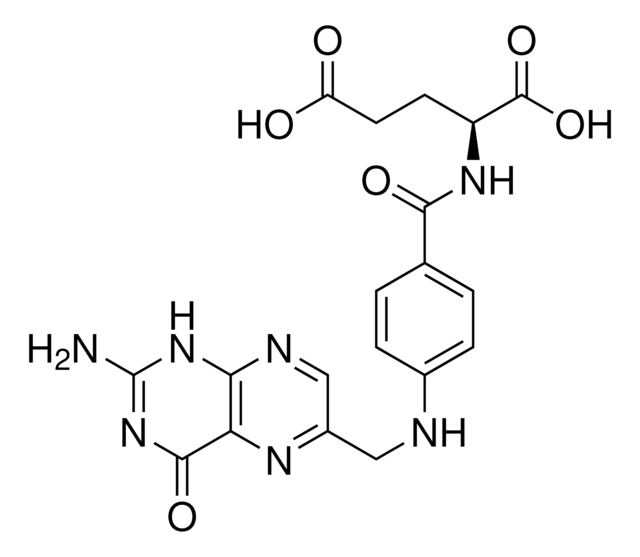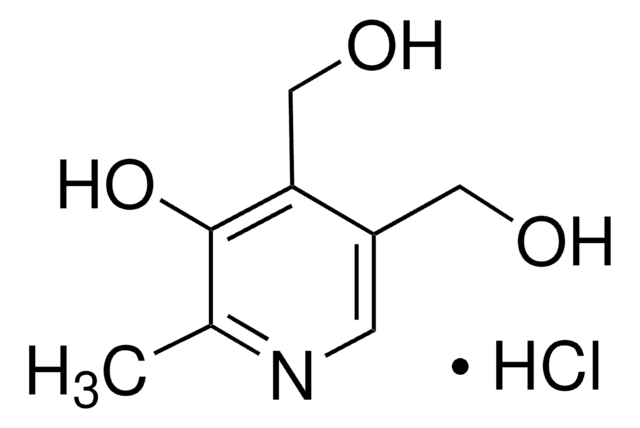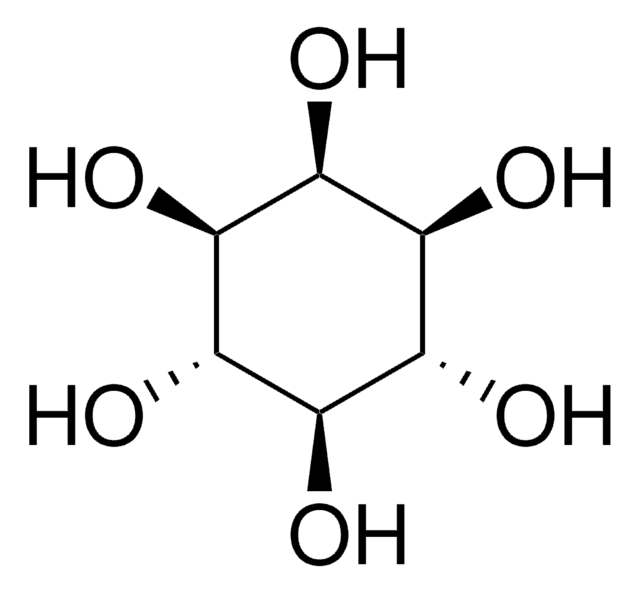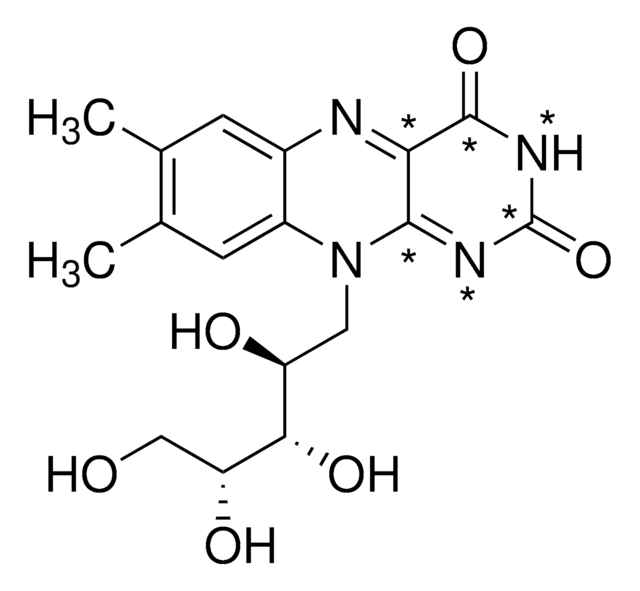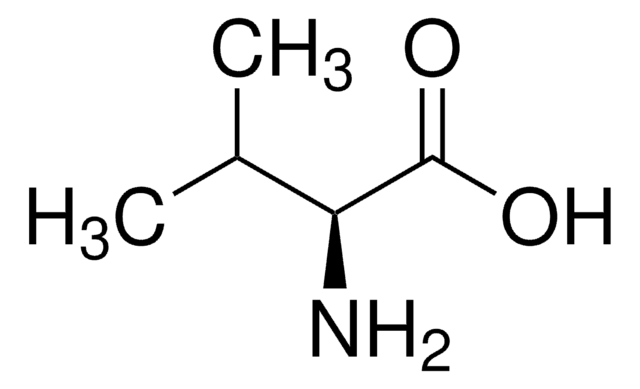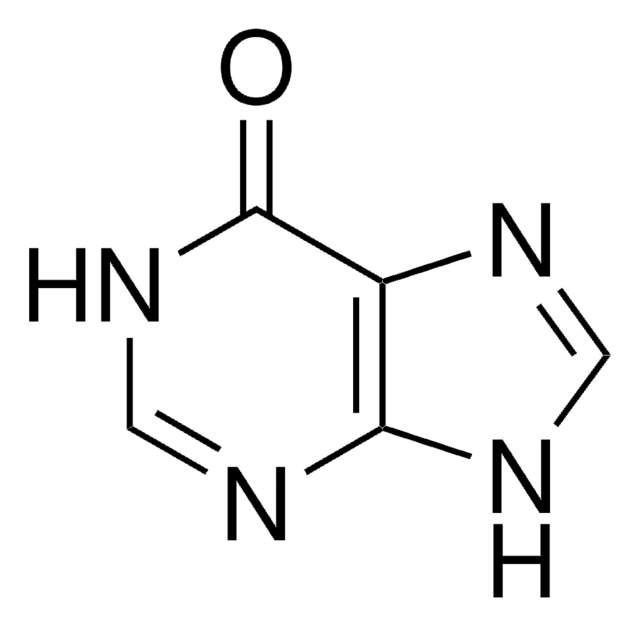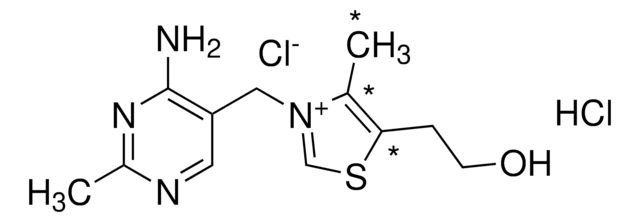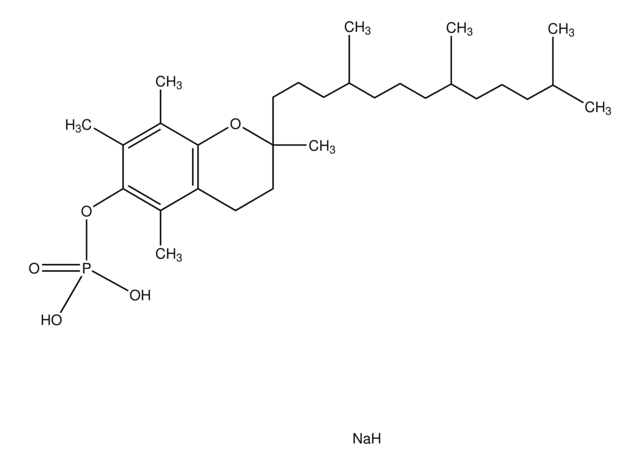P6155
Pyridoxal hydrochloride
BioReagent, suitable for cell culture, suitable for insect cell culture
Synonym(s):
3-Hydroxy-5-(hydroxymethyl)-2-methyl-4-pyridinecarboxaldehyde hydrochloride, PL HCl
About This Item
Recommended Products
product line
BioReagent
Quality Level
assay
≥99% (HPLC)
form
powder
mol wt
Mw 203.62 g/mol
technique(s)
cell culture | insect: suitable
cell culture | mammalian: suitable
color
white to off-white
mp
173 °C (dec.) (lit.)
solubility
water: soluble 50 mg/mL, clear, colorless to light greenish-yellow
storage temp.
−20°C
SMILES string
Cl[H].[H]C(=O)c1c(CO)cnc(C)c1O
InChI
1S/C8H9NO3.ClH/c1-5-8(12)7(4-11)6(3-10)2-9-5;/h2,4,10,12H,3H2,1H3;1H
InChI key
FCHXJFJNDJXENQ-UHFFFAOYSA-N
Looking for similar products? Visit Product Comparison Guide
Related Categories
General description
Application
wgk_germany
WGK 2
flash_point_f
Not applicable
flash_point_c
Not applicable
ppe
Eyeshields, Gloves, type N95 (US)
Certificates of Analysis (COA)
Search for Certificates of Analysis (COA) by entering the products Lot/Batch Number. Lot and Batch Numbers can be found on a product’s label following the words ‘Lot’ or ‘Batch’.
Already Own This Product?
Find documentation for the products that you have recently purchased in the Document Library.
Customers Also Viewed
Articles
This page segues to comprehensive insights on how Vitamin B6, Pyridoxal and Pyridoxine affect the performance of serum-free, protein-free cell culture systems used for biomanufacturing heterologous proteins including monoclonal antibodies. The page introduces the in vitro chemistry and biochemistry of pyridoxal, pyridoxine.
Our team of scientists has experience in all areas of research including Life Science, Material Science, Chemical Synthesis, Chromatography, Analytical and many others.
Contact Technical Service